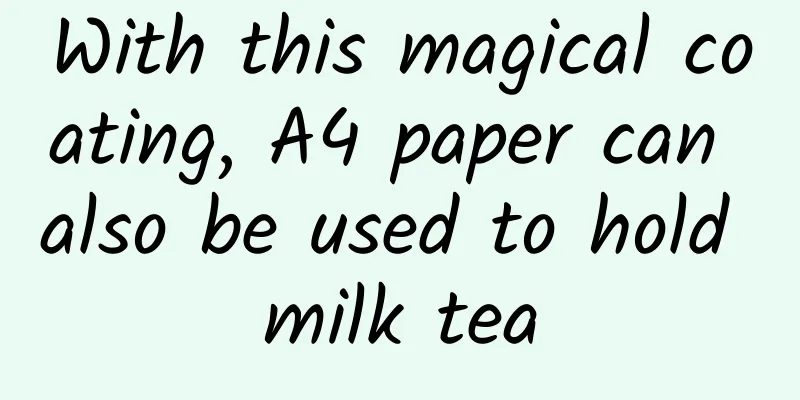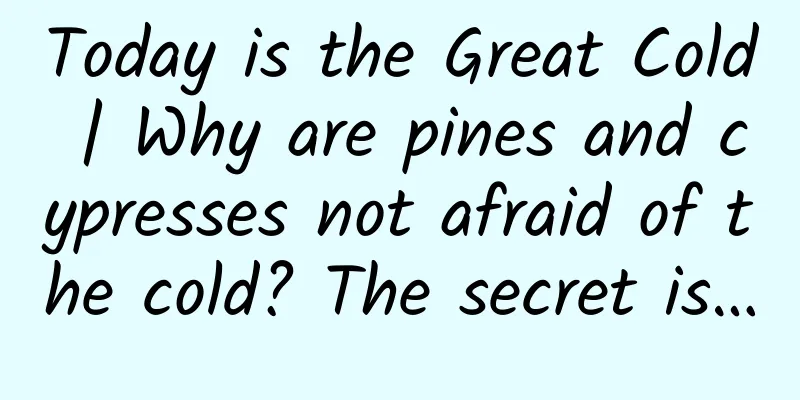With this magical coating, A4 paper can also be used to hold milk tea

|
Classic origami cranes made of paper, coated with Choetsu (left) and uncoated (right). When immersed in water, the coated crane retained its shape, while the uncoated crane quickly became saturated with water and began to disintegrate. Image credit: Hiroi Zenji et al. Zhang Jiaxin, intern reporter at Science and Technology Daily In the future, people may be able to use A4 paper to package milk tea with the help of coatings. According to a study published on the 13th in the journal Industrial and Engineering Chemistry Research, published by the American Chemical Society, researchers at the University of Tokyo in Japan have found a simple, economical and efficient way for the first time to "impart" some of the properties of plastic to relatively sustainable paper materials: a coating called Choetsu can not only make paper waterproof, but also maintain its elasticity and biodegradability. "In my opinion, the main problem with plastic materials is that they cannot be degraded quickly and safely." Professor Zenji Hiroi of the Institute of Solid State Physics at the University of Tokyo said that materials like paper can be safely degraded, but they cannot meet the wide range of uses of plastic materials. Now, the new method can give paper some of the good properties from plastics, but without any adverse effects on the environment. Choetsu is a combination of materials that, when applied to paper, spontaneously creates a strong, water-repellent film when it comes in contact with moisture from the air. The coating is made up of safe and low-cost chemicals, primarily methyltrimethoxysilane, some isopropyl alcohol, and a small amount of tetraisopropyl titanate. Structures made from paper, such as food containers, are sprayed or dipped into this coating and allowed to dry at room temperature. Once dry, a thin layer of silica containing methyl groups forms on the cellulose that makes up the paper, providing strong water-repellent properties. In addition, the reaction that occurs during the coating process automatically creates a layer of titanium dioxide nanoparticles that creates dirt and bacteria repelling properties that protect the coated items for a longer period of time. Over time, all chemicals involved in the coating break down into harmless substances such as carbon, water and sandy silica. Hiroi said he hopes to apply this method to other types of materials in the future. At the same time, the liquid composition can also be adjusted for other materials to create a stain-proof and mildew-proof coating for use on glass, ceramics and even other plastics. Source: Science and Technology Daily |
>>: World Hypertension Day丨Take this anti-stress manual and stay away from the "invisible killer"
Recommend
Hello, this is Xiaomi Department Store
[[131126]] This Tuesday, Xiaomi released a number...
17 classic marketing cases
Marketing Tips Fables Series 1: Two Salesmen This...
How do big companies like Tik Tok and Duoduo APP carry out promotion and marketing?
It is already the beginning of 2019, and the New ...
There is no "Dragon Palace" on the seabed, so why do scientists want to "dive" into the deep sea?
In the vast field of earth science, deep scientif...
E-commerce operations: How to use coupons?
When it comes to e-commerce platforms, everyone k...
Community, e-commerce, tools, which one is the future of the women's market?
Since the rise of the mobile era, consumer habits...
Don’t blame your husband for having a yellow pillow, he produces half more oil than you!
Audit expert: Zhang Yuhong Chief Physician of Der...
The evolution of the small hearing aid, a bridge connecting the hearing-impaired to the world of sound
"If I wear hearing aids, people will think I...
E-book money-making method can easily earn 9000+. Ordinary people can do it too!
From the figure below we can see that the selling...
It’s not an illusion: It’s really easier to gain weight after this age
May 11 is World Obesity Day. Obesity has become a...
[Smart Farmers] Understanding in one picture: How to verify the safety of genetically modified foods?
[Smart Farmers] Understanding in one picture: How...
Shapers of Earth's history: Are meteorites "destroyers" or "midwives"?
Tuchong Creative In the long history of the Earth...
BYD has become a "traditional car company". Behind its leading sales, intelligent driving is still an unspeakable pain
Earlier this month, BYD Auto announced the launch...
Lang Xianping: LeEco and Internet companies cannot succeed in making cars
Lang Xianping, a well-known "Internet celebr...
When I check the source code of a web page, it is all garbled, but the page displays normally. What's going on?
When I check the source code of a web page, it is...









